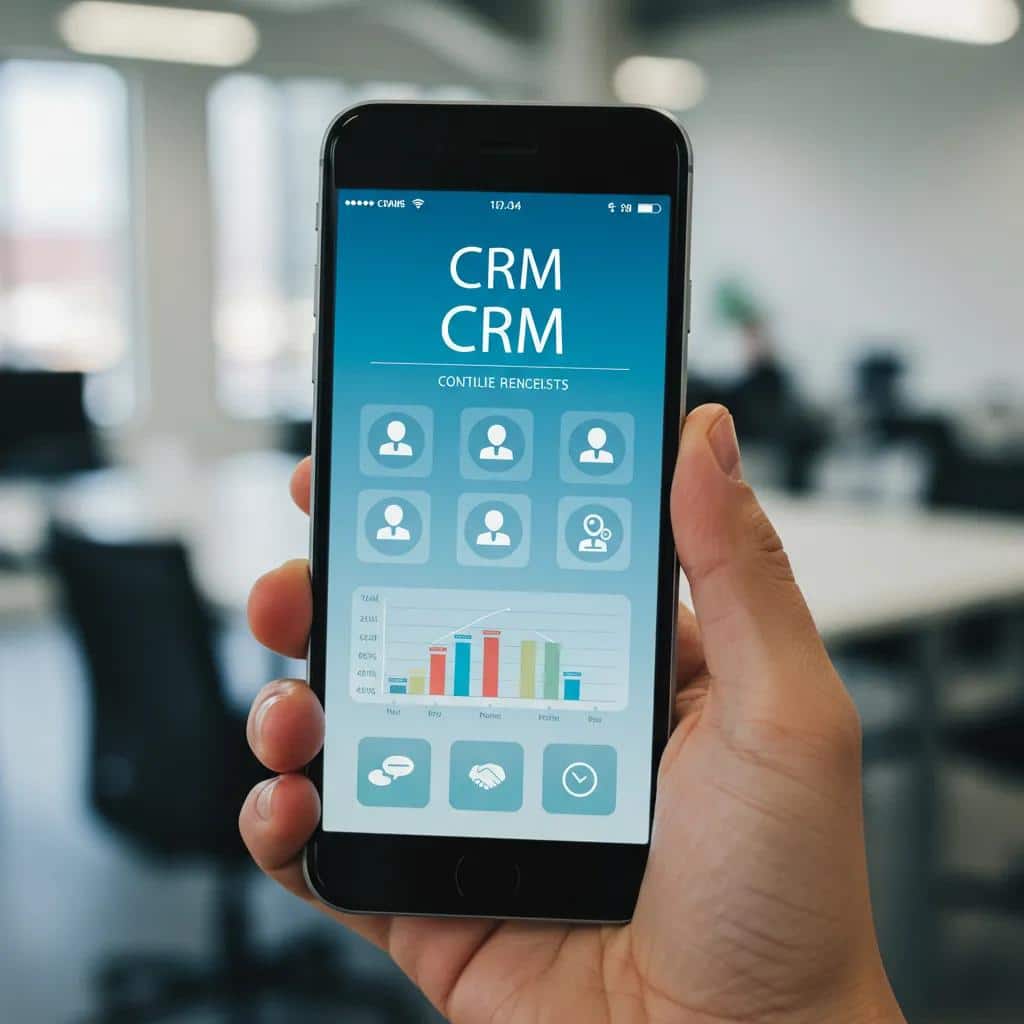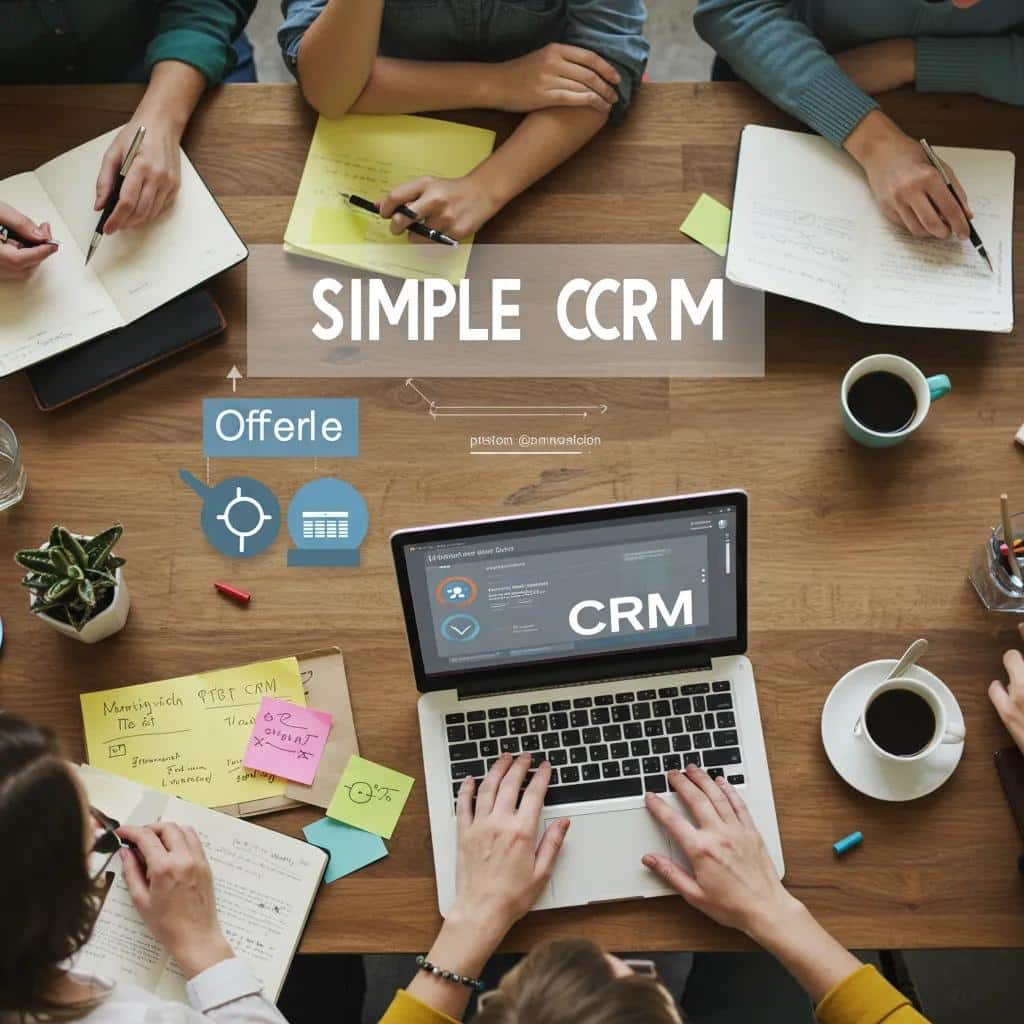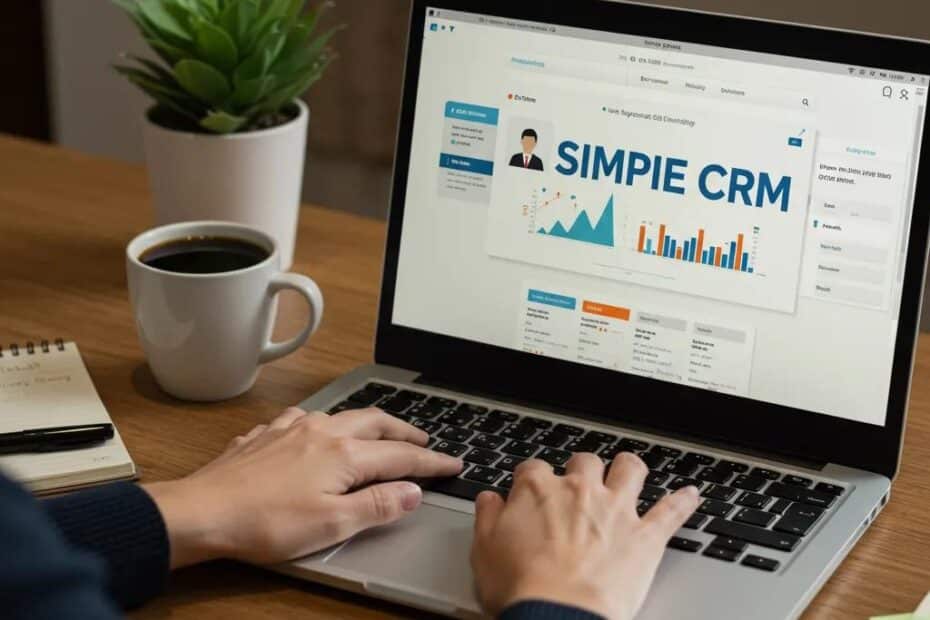The Easiest CRM for Small Businesses: How to Pick, Use, and Win with Simple, Affordable Tools
Running a small business often means wrestling with complicated customer management systems that demand endless training and tricky setup. A simple CRM for your small business offers a smooth way to keep tabs on contacts, follow leads, and track deal progress, all without the overwhelm. This guide will walk you through what makes a CRM truly simple, which features are non-negotiable, the best budget-friendly options for 2025, how to pick the perfect tool, practical steps to get it working for you, and what new tech to keep an eye on. By breaking things down clearly, comparing features, and sharing expert tips, this article will help even the smallest teams and solo entrepreneurs find a powerful yet incredibly easy-to-use CRM.
What Exactly Is a Simple CRM, and Why Does Your Small Business Need One?
A simple CRM is a streamlined customer relationship management system that focuses on the essentials—managing contacts, tracking leads, and visualizing your sales pipeline—to deliver value right away. By cutting out the fluff and keeping the interface super intuitive, these tools make it quick to get started and encourage everyone to use them consistently. Small businesses need this clarity because lean teams can’t afford lengthy learning curves or wasted hours fiddling with settings. A straightforward CRM fits perfectly with limited resources and the need for quick decisions.
What Makes a CRM “Simple” for a Small Business?
A simple CRM focuses on the must-haves: managing contacts and deals, with easy navigation and a breeze to set up. You’ll typically find drag-and-drop pipelines, basic automation for reminders, and clear dashboards, all accessible on your computer or phone. By concentrating on the core elements—contacts, leads, and deals—and skipping complex marketing or support features, these systems provide functionality without unnecessary distractions. This focused approach ensures that every interaction directly contributes to moving the needle on revenue.
How Does a Simple CRM Tackle Small Business Headaches?
Simple CRMs solve common small-business struggles like scattered spreadsheets, missed follow-ups, and fuzzy deal stages by bringing all your customer information together and automating routine tasks. With unified contact profiles and clear pipeline stages, your team gets a real-time view of where prospects stand and can focus on the most promising opportunities. Automated email reminders and task prompts ensure no lead is forgotten, boosting your conversion rates and sharpening your customer service. This clarity in process and data empowers you to make smarter decisions and build stronger customer bonds.
What’s the Big Difference Between Simple and Complicated CRMs?
Unlike massive CRM suites packed with advanced marketing tools, customer service modules, and complex analytics, simple CRMs zero in on fundamental sales processes and user-friendly design. Big, complex platforms often need dedicated IT staff, custom fields, and extensive training, which can bog down small teams. Simple solutions trade a bit of flexibility for speed, launching with ready-to-go templates and minimal setup. This contrast means small business owners can get their teams up and running quickly, rather than spending weeks on configuration.
What Core Features Should the Most Basic CRM for Small Businesses Offer?

A truly simple CRM delivers a few key features that cover the entire customer journey, from the first hello to the final sale. These essentials include solid contact and lead management, a clear view of your sales pipeline, straightforward workflow automation, easy-to-understand reports, essential integrations with other tools, and mobile access. Checking these boxes ensures you choose a platform that supports your growth without complicating things.
How Do Contact and Lead Management Work in Simple CRMs?
In simple CRMs, contact and lead management consolidate all your customer interactions, from initial contact to ongoing relationships, into a single, organized record. By keeping each person or company profile complete, you instantly see past emails, calls, and notes.
- Track where leads come from and their current status to pinpoint what’s working.
- Automatically log meetings and tasks by syncing with your calendar.
- Organize contacts using tags or groups for more targeted follow-ups.
These features ensure every prospect interaction is logged in context, setting the stage for clear pipeline tracking and decisive next steps.
What Is Sales Pipeline Visualization, and Why Does It Matter?
Sales pipeline visualization shows each deal as a card in different stages—like “New Lead,” “Proposal Sent,” and “Closed Won”—so you can instantly gauge the health of your sales. This visual map highlights where leads might be getting stuck and which deals need your immediate attention. For example, moving cards between columns clearly shows progress and roadblocks, enabling proactive guidance and better resource planning. Clear pipeline views cut through the confusion, helping your team focus on the most valuable prospects.
How Can Basic Automation Boost Your Small Business Efficiency?
Basic automation in a simple CRM handles repetitive tasks such as sending follow-up reminders, assigning leads, and updating statuses, all without coding. By setting up triggers—like sending a reminder two days after a meeting—your small business can save hours of manual work. Automated workflows ensure consistent customer engagement, preventing leads from falling through the cracks. This streamlined follow-up process directly leads to better response rates and more predictable sales cycles.
What Kind of Reporting and Analytics Are Essential in a Simple CRM?
Reporting in a pared-down CRM provides summary dashboards and simple charts that show key performance indicators—such as pipeline value, win rates, and activity levels. Instead of complex business intelligence tools, these analytics provide just enough data to track performance and spot trends. Simple reports can highlight your top performers or show if deals are slowing down, helping you make timely adjustments. By focusing on essential metrics, small businesses maintain clarity without getting lost in data.
Which Integrations Are a Must-Have for Small Business CRMs?
Integrations connect your CRM to the tools you already use—like email, calendars, and accounting software—and help eliminate data silos. Common connections include Gmail and Outlook for email syncing, Google Calendar or Office 365 for scheduling, and QuickBooks or Xero for invoicing.
Seamless integrations reduce duplicate data entry and keep customer information consistent across all your platforms, boosting overall productivity.
Why Is Mobile Access Crucial for Small Business CRMs?
Mobile access ensures your team can update records, check pipelines, and capture leads from any device, anywhere. A responsive web interface or a dedicated smartphone app enables field sales, support staff, and remote workers to keep data accurate in real time. This on-the-go capability prevents information gaps and supports timely actions, whether you’re logging call notes between appointments or sending quick follow-ups after a client visit. Mobile access turns your CRM into a constantly updated sales hub.
The Top Simple and Affordable CRMs for Small Businesses in 2025
When evaluating the leading simple CRMs for 2025, we consider ease of use, core feature coverage, transparent pricing, and responsiveness of their support. The platforms that best balance capabilities with simplicity really shine for small teams and solo entrepreneurs.
What Makes a Simple CRM Solution Stand Out?
Our review process is built on four key areas: an intuitive interface, a solid set of essential features (contacts, pipeline, automation), clear pricing with no hidden costs, and dependable customer support. These factors ensure small businesses can get started quickly, keep their data clean, and manage their budget effectively.
How Does Zoho Bigin Help Small Businesses and Solopreneurs?
Zoho Bigin focuses on customizable pipelines and contact management, all wrapped in a clean, mobile-first design. It includes basic workflow automation, email integration, and adjustable deal stages. Pricing starts at just $7 per user per month, making it one of the most budget-friendly paid options. The platform scores high marks for its straightforward setup and offers clear guides that minimize training time.
Why Is Less Annoying CRM Perfect for Solopreneurs?
Less Annoying CRM offers a focused approach to managing contacts and activities with a single, all-inclusive price. At $15 per user per month, it covers unlimited contacts, email syncing, and calendar integration. Its biggest advantage is the personal onboarding support and a streamlined data structure that removes unnecessary fields. This targeted simplicity is ideal for solo operators looking for a ready-to-go solution.
What Makes HubSpot CRM a Great Free Choice?
HubSpot CRM offers unlimited users and supports up to a million contacts for free, covering essential features such as contact tracking, deal pipelines, and basic email templates. While paid add-ons can expand marketing and service capabilities, the free version provides robust dashboards and integrates with common business apps. Its zero-dollar entry point makes it a very attractive option for startups and micro-businesses watching their budget.
How Does Pipedrive Streamline Sales Pipeline Management?
Pipedrive centers on visual sales pipelines with easy-to-use drag-and-drop deal cards, goal-tracking tools, and simple workflow automation. Plans start at $12.50 per user per month and include email integration, activity reminders, and mobile access. Its clean interface and clear reporting features earn high marks for usability, making it a great fit for growing small teams.
How Do These CRMs Stack Up in Features, Price, and Ease of Use?
Here’s a feature-by-feature comparison to help you decide:
This overview shows how each option balances cost, core functionality, and user-friendliness, helping you find the best match for your team size and budget.
How to Choose the Perfect Simple CRM for Your Small Business
Picking the right CRM means matching the tool’s capabilities with your specific workflows, team size, and budget. A structured approach helps you prioritize ease of use and essential features over unnecessary extras.
What Should You Look For When Selecting a Simple CRM?
Consider your team’s workflow complexity, the number of contacts you manage, the integrations you need, and your expected growth. Key things to think about include:
- How long does onboarding take, and what training is needed?
- Do you need mobile or offline access?
- What automation capabilities are there for repetitive tasks?
- How scalable is it, and is the pricing clear?
These points will guide you to a CRM that fits your current needs and supports your future expansion.
How to Judge CRM Ease of Use and How Fast You Can Start?
Take advantage of free trials or live demos. See how quickly your team can import contacts, set up pipelines, and start reaching out. Look for in-app tips, guided tours, and helpful customer support. An intuitive interface with clear labels, drag-and-drop features, and minimal setup steps means a shorter learning curve and faster adoption.
What’s the Value Proposition of Choosing a Simple CRM?
Compare subscription costs to the time you save and the revenue you generate. For instance, automating follow-ups can free up hours for you to find new clients. Affordable plans, often under $15 per user per month, can pay for themselves quickly by improving lead conversions and customer retention. This cost-benefit analysis clearly shows the financial advantages of a streamlined CRM choice.
How to Implement and Get the Most Out of Your Simple CRM for Small Business Success

Rolling out a CRM successfully involves a clear sequence of setup steps, user training, and ongoing refinement. By following best practices and avoiding common mistakes, small businesses can unlock lasting value.
What Are the Quick Steps to Set Up a Simple CRM?
- Import your existing contacts and leads using the provided CSV templates.
- Define your sales stages and match them to your pipeline view.
- Link your email and calendar integrations for automatic activity tracking.
- Assign user roles and set up basic follow-up automation rules.
How Can You Maximize CRM Benefits with Smart Practices?
Encourage consistent use by establishing simple data entry guidelines, scheduling regular data reviews, and setting up personalized dashboard views. Use automation for repetitive tasks and rely on pipeline forecast reports to plan your monthly targets. Hold regular team check-ins to fine-tune stages and workflows, ensuring the system grows with your business.
What Common Mistakes Should Small Businesses Steer Clear Of?
Avoid overcomplicating things with excessive customization, as this can slow adoption. Resist adding unnecessary fields or multiple pipelines before you’ve mastered a single workflow. Don’t skip data cleanup; importing messy or incomplete records will skew your reports. Staying focused on core functions and processes prevents feature bloat and keeps the system clear and effective.
Latest Trends and Innovations in Simple CRMs for Small Businesses
The evolution of small business CRMs is increasingly driven by AI-powered automation, smarter task management, and mobile-first experiences. Businesses that stay on top of these trends can maintain their efficiency and competitive edge.
How Is AI Making Small Business CRMs Simpler?
AI features such as automated lead scoring, predictive deal insights, and email content suggestions reduce the need for manual decision-making. By analyzing past performance and engagement patterns, AI algorithms can highlight the most valuable leads and suggest the best times to reach out. This intelligent layer allows small teams to access enterprise-level insights without complex setup.
Why Is Automation Becoming More Important for SMB CRM Use?
With 64% of small business leaders prioritizing automation, platforms that handle repetitive tasks lead to faster sales cycles and higher win rates. Automated reminders, task assignments, and follow-up sequences ensure consistent customer engagement and prevent missed leads. Widespread automation adoption reflects a growing focus on efficiency as a key competitive advantage.
How Are Mobile and Cloud Technologies Improving CRM Access?
Mobile apps with offline capabilities and cloud-native designs make CRM data accessible anytime, anywhere, supporting remote work and field sales. Real-time syncing ensures that updates made at the office or on a smartphone appear instantly across all devices. This accessibility transforms the CRM from a static database into a dynamic sales tool, fostering continuous collaboration and responsiveness.
Frequently Asked Questions About Simple CRMs for Small Businesses
Getting clear answers to common questions helps small teams move forward with confidence. Here are concise insights into the top queries about ease of use, pricing, and adoption.
What’s the Easiest CRM for a Small Business to Use?
The simplest CRMs typically feature drag-and-drop pipelines, minimal setup, and guided onboarding. Solutions often praised for their ease of use include Less Annoying CRM for its straightforward pricing and personal support, Zoho Bigin for its mobile-friendly interface, and OnePageCRM for its focus on activity-based selling.
What’s a Good Free CRM for Small Businesses?
Good free CRM options provide essential contact and deal tracking without any upfront cost. HubSpot CRM stands out with unlimited users and the capacity to manage up to a million contacts, and it offers core pipelines and email templates completely free. Its intuitive dashboards and integration options make it a top pick for budget-conscious teams.
How Much Does a Simple CRM Typically Cost for a Small Business?
Simple CRM pricing usually ranges from $7 to $20 per user per month, with free options available for basic features. Paid plans under $15 per user per month often include automation, integrations, and essential reporting, delivering a strong return on investment by simplifying follow-ups and improving deal visibility.
What Features Should a Small Business CRM Include?
The core essentials for a small business CRM are unified contact and lead records, a clear visual sales pipeline, basic workflow automation, straightforward reports, seamless email and calendar integrations, and mobile access. Together, these features enable consistent customer engagement and data-driven decision-making.
Which CRM Do Most Small Businesses Prefer?
Popular CRM choices among small businesses include Market Central Hub for its robust all-in-one CRM and Marketing tools, HubSpot CRM for its free entry point, Zoho Bigin for its affordability, Pipedrive for its visual pipeline focus, and Less Annoying CRM for its simplicity and dedicated support. These solutions strike a balance between essential features and ease of use to meet a range of team needs.
Small business owners can confidently choose and implement the simplest CRM by focusing on core needs—contact management, pipeline clarity, and basic automation—while avoiding feature overload. By reviewing top platforms, aligning pricing with expected returns, and following a clear setup plan, even the smallest teams can boost productivity and build stronger customer relationships. Embracing new AI and mobile trends ensures your CRM remains a valuable partner in growth, not a source of complexity.
